By
June Isaacson Kailes, Associate Director
Center for Disability Issues and the Health Professions
Western University of Health Sciences
jik@pacbell.net
2008 Version 1
Required Citation
Kailes, J.I., 5 “G’s” Getting Access to Health Care for People with Physical Disabilities, 2008 Version 1, Published and distributed by Center for Disability Issues and the Health Professions, Western University of Health Sciences, 309 E. Second Street, Pomona, CA 91766‑1854, Phone: (909) 469‑5380, TTY: (909) 469-5520, Fax: (909) 469‑5503, Email: ahcs@westernu.edu, www.CDIHP.org
This work was supported by the National Institute on Disability and Rehabilitation Research, U.S. Department of Education, under grant #H133E020729. The opinions contained in this manuscript do not necessarily reflect those of the Department of Education.
Permission is granted to copy and distribute this material provided that:
-
Proper copyright notice and citation is attached to each copy;
-
No alterations are made to the contents of the document;
-
The document is not sold for profit; and
-
The Center for Disability Issues and the Health Professions is notified of such use. Please contact jik@pacbell.net
Acknowledgements
For their generous giving of time, attention to details, contributions and thorough reviews of various drafts of this manuscript, the author gratefully acknowledges and thanks
Lauren N. Howard, Disability Consultant, Lincolnton, Georgia
Melissa R. Lemke, Rehabilitation Engineer, Rehabilitation Engineering Research Center on Accessible Medical Instrumentation, Madison, Wisconsin
Christie Mac Donald MPP, Senior Policy Analyst, Center for Disability Issues and the Health Professions, Pomona, California
Dot Nary, MA, National Institute of Health, Doctoral Trainee, University of Kansas, Lawrence, Kansas
Molly Follette Story, Principal, Human Spectrum Design, Santa Rosa, California
1. Getting Started
What does access to health care really mean? For people with disabilities access to health care means more than finding a good doctor and being able to pay, although these can be huge barriers. It also means getting to and into the office, getting on the exam table and the equipment and getting equal care as that provided to others. These additional access barriers to health care faced by people with physical disabilities are the focus of this paper.
The following 5 areas highlight steps you can take to increase your chances of getting the health care you need.
-
Getting Started
-
Getting To, Into and Through a Healthcare Facility
-
Getting Access to Medical Equipment
-
Getting What You Need During Your Visit
-
Getting Changes Made
Do you get good health care? Is it the same as everyone else gets? Can you get on the exam table? Can you use the scale? Can you get into and use the bathroom? If you answered “no” to any of these questions, you may not be getting the same equal access to health care as that provided to others. It’s time to take a closer look at your health and your use of health care services.
The following story may be familiar to you.
“Exam chairs are impossible to get in and out of and I have to have my husband or an office worker help me. I have delayed visits to doctors’ offices because it takes a village to get me on and off an exam table, which means I don’t go to preventive care appointments.”1
Have you felt this way? It’s a hassle to go to the doctor and so you put off those regular check-ups. “I’m okay, you tell yourself. It’s really nothing. It’s not worth the effort.” By the time you go the doctor, your problem may be worse than you thought. That condition, which could have been prevented or treated early, is now more serious, extensive, expensive and complicated to treat.
Is your health worth the hassle? Sure it is. There are things you can do to help reduce the hassle for yourself and others with physical disabilities.
1 Markwalder, A., Disability Rights Advocates (2005). A CALL TO ACTION: A Guide for Managed Care Plans Serving Californians with Disabilities. Oakland, CA: DRA
1.1 Knowing Your Rights and Responsibilities
Just as you are the expert on your body, you should also know your rights under the Americans with Disabilities Act (ADA) and about other information that will help you get equal access to health care services.
The Americans with Disabilities Act (ADA) covers public and private health care facilities and doctors offices. These places are required to provide access to the buildings, services and procedures (examinations, x-rays, weighing, etc.) for people with disabilities. For example, a medical clinic can be required to meet ADA building requirements (for its parking, entrance, bathrooms, etc,) and also required to provide full access to services, which means that when needed, they would have to help a person onto an exam table or other equipment, like exam chairs.
The ADA is only enforced if you bring barriers to the attention of health care providers. (The term health care provider used in this paper refers to a broad group of people who provide health services. These individuals include, but are not limited to, doctors, nurses, therapists, technicians, and technologists.) In many cases, providers do not know that barriers exist or they may think it’s not a problem because no one has ever said anything. They may never know unless you tell them. You can use the ADA as a tool to improve the quality of care you receive.
ADA Resources
-
Your Guide to the Americans with Disabilities Act: Medical Offices – is a guide published by the Council for Better Business Bureaus’ Foundation. http://www.aapd-dc.org/NOW/presentMoffices.html
-
Checklist for Readily Achievable Barrier Removal – is an easy‑to‑use survey tool individuals can use to identify barriers in their facilities. http://www.usdoj.gov/crt/ada/checkweb.htm
-
Americans with Disabilities Act (ADA) Compliance Links - http://www.cdihp.org/links.html#ada
-
Removing Barriers to Health Care: A Guide for Health Professionals – provides specific ADA requirements, picture illustrations, and tips on creating accessible environments and services. http://www.fpg.unc.edu/~ncodh/pubs.htm
Your doctor will probably not have information about the ADA or know where to get it. You can be ready. See the “ADA Resources” section below for some basic information on the ADA as it relates to health care. More information on accessible medical equipment (exam tables and scales) is provided later in this paper.
If you are experiencing problems with access, it is your responsibility to speak up. Taking that first step is often the hardest step. So, why don’t you do something when you see a problem or know you are not getting equal access to care?
-
You are too sick or in need of immediate attention and not able to deal with the issue at this time,
-
You don’t know where to start or how to ask for a change,
-
You are fearful that you might anger or insult a health care provider who might punish you in some way,
-
You feel:
-
It is too much work,
-
It is too much time and possibly too much money,
-
It can take months, sometimes years to get results,
-
While you might get long-term change, it will not solve your current problems,
-
You assume that someone else will do it.
Only # 1, the first reason on this list, is a good excuse. Even if you do not think of yourself as a change agent, an advocate or an assertive person, there are things you can do to make things better. Your goal is good health, which requires that you get equal access to health care.
2. Getting To, Into and Through a Health Care Facility
You can encounter barriers even before you get to your medical appointment. While this paper will not address all the possible issues related to access to the facility, here are a few strategies for dealing with getting to, into and through health care offices and clinics.
Knowing some facts about the health care facility ahead of time will help you prepare for what you might encounter when you arrive. Here are just a few examples of specific questions you can ask office staff when you make your appointment. Tailor these questions to address your needs. Be prepared, when staffs do not know the answer to the question, to tell them how they can go about getting the answer.
2.1 Parking
Parking spaces 8 feet wide for car plus 5-foot wide access aisle
-
Are there accessible parking spaces (8 feet wide for car plus 5-foot wide access aisle)?
-
Are there usable ramps or curb cuts onto the sidewalks?
-
How far away from the entrance is the accessible parking?
-
If it is a long distance, is there an accessible and available motorized cart, van or bus?
-
-
Are there accessible paths from the parking, drop off areas, or transit stops without stairs or other items blocking access (utility boxes and poles, fire hydrants, etc.)?
Path blocked by a fire hydrant in the middle of the sidewalk
2.2 Entrances
-
Are there signs showing the locations of accessible entrances?
Medical office with one step entry, no access for wheelchair or scooter user
Directional signage
Directional signage for accessible entrance
-
If there are stairs at entrances, are there also ramps or lifts?
Accessible entrance
-
Can the accessible entrance be used independently, or is the door heavy or usually locked?
-
Is the entrance door at least 32 inches wide?
-
Once inside the building, is the accessible route to all public spaces at least 36 inches wide?
2.3 Restrooms
-
Are the restrooms accessible?
-
Is the entry door at least 32 inches wide?
-
Is there a larger stall or an area in the restroom at least 36 inches in diameter and free from obstructions (trash cans, chairs, etc.)?
-
Are there grab bars beside and behind the toilet?
-
Grab bars behind and beside the toilet
2.4 Patient Areas
-
Is there space in the waiting room for wheelchair users to sit?
-
Is there space in the exam room for an individual using a wheelchair or other mobility aid to move and turn around?
Waiting room with space for a wheelchair user
3. Getting Access to Medical Equipment
No access to medical equipment can prevent people from getting appropriate medical services. In a national survey of people with disabilities or activity limitations, wheelchair users reported the following:
-
69% had difficulty using exam tables;
-
60% had difficulty being weighed due to inaccessible scales;
-
45% had difficulty using x-ray equipment, such as mammography equipment;
-
43% had difficulty using medical chairs.
In addition, 33% of all people with mobility disabilities experienced barriers accessing examination rooms.2
2 Kailes, J.I. (2006). The Patient’s Perspective on Access to Medical Equipment. In J. Winters and M. Story (Ed.), Medical Instrumentation: Accessibility and Usability Considerations (pp. 3-14). Boca Raton, FL: CRC Press.
3.1 Getting Weighed
Accessible scales are important to quality health care for people with disabilities. An accessible scale allows a wheelchair user to roll onto the platform of the scale. Someone who has poor balance, or who cannot step up, can walk on or sit on a chair on the scale platform.
Wheelchair user being weighed on accessible scale
The scale should have sturdy handrails, a high weight capacity (500+ lbs), and a slip-resistant platform. For more information on accessible scales and a list of manufacturers, look on the Internet at http://www.cdihp.org/briefs/brief2-weight-scales.html. You can use this document as a source of information for your health care provider.
Here are some reasons you can use to help your health care provider understand why having an accessible scale is important.
-
If your health care providers do not know your current and accurate weight, they may prescribe the wrong amount of medication for you.
-
Changes in weight can be important signs of health conditions.
-
Weight gain can be a sign of heart disease, high blood pressure, diabetes, reproductive problems and many other conditions.
-
Weight loss can be a sign of cancer, heart or digestive conditions, depression, and many other conditions.
-
-
If a health care office does not have an accessible scale, they must help people onto the scale, but this is not always possible for individuals with poor balance or who cannot stand.
-
When accessible scales are not available, patients may be unsafely assisted or lifted onto a standard scale. This type of assistance can also cause back or other musculoskeletal injuries to the medical facility staff.
-
An accessible scale benefits more than just patients who use wheelchairs. It can be used by anyone who has difficulty stepping up, balancing, standing on the small area of a standard scale or who may be too heavy to use a standard scale.
-
Accessible scales allow health care facilities to accurately obtain the weight of all patients and, therefore, comply with the ADA.
The national study of people with disabilities or activity limitations already mentioned found that 54% of 222 people with experience using weight scales had moderate or greater difficulty. Their issues included:
-
Standing scales may be unstable.
-
Scales have nothing to hold on to.
-
Scale displays are not usable by people with low or no vision.
Some survey respondents said they did not know their weight and had not been weighed in many years. Some reported that their health care providers often asked them to “guess” their weight, which was impossible.3
Maria had not been weighed in over 10 years, since the last time she had seen her doctor at the rehabilitation center. She had always just guessed her weight based on how her clothes fit her. But now she was pregnant and she knew that accurate measurement of her weight was an important part of her prenatal care. At first her doctor suggested that she go to the local rehab center, which was 10 miles away and arrange to be weighed there before each appointment.
This was not acceptable. It was a huge hassle (driving there, transferring in and out of the car, waiting, weighing, driving back, etc.) Maria mentioned that it would be helpful if the doctor got an accessible scale. Maria shared information on accessible scales at her next visit. She gave the same information to the office manager. Maria’s doctor agreed to purchase an accessible scale.
Maria was able to use the scale through her pregnancy. Awhile after the scale was purchased, her doctor commented that she had another patient who used a wheelchair that needed to use the scale and she also used the scale for an obese patient who couldn’t use the standard scale. It was quickly proving to be a worthwhile purchase for her office and helpful for many people, not just Maria. Actually the scale was used by all the doctor’s patients.
3 Kailes, J.I. (2006). The Patient’s Perspective on Access to Medical Equipment. In J. Winters and M. Story (Ed.), Medical Instrumentation: Accessibility and Usability Considerations (pp. 3-14). Boca Raton, FL: CRC Press.
3.2 Getting on the Table
The national survey also found that 75% of 291 people with experience using examination tables had moderate or greater difficulty using them. The height of exam tables was the most commonly reported complaint.4 A survey of approximately 400 Californians with disabilities found exam tables were inaccessible to 69% of wheelchair users, and 46% of cane, crutch and walker users.5
When getting health care, you usually have to get on and off of different types of equipment like tables and chairs. Many of these chairs and tables are high, which may be helpful to the doctor, nurse or technician, but difficult to impossible for you. If you cannot get onto the equipment, you may not get a thorough examination. Accessible tables and chairs that lower to 17-20 inches from the floor to the top of the cushion can make getting on and off them easier.
Traditional high exam table
Wheelchair user transferring onto accessible exam table
An accessible table is height adjustable to a minimum height of 17- 20 inches from the floor. Additional helpful features include an extra-wide top surface and higher weight capacity for larger people, adjustable side rails, positioning straps, and foot and leg supports that can be adjusted and locked.
Removable and adjustable side rail
For more information on accessible tables and a list of manufacturers, visit the Internet at http://www.cdihp.org/briefs/brief1-exam-tables.html. You can use this Internet document as a source of information for your doctor.
Holly uses a wheelchair. For quite a while she had been looking for a physician with a exam table that lowers to 17- 20 inches from the floor. Many of her co-workers went to physicians at a large and well-respected women’s clinic, so Holly called to ask if they had an accessible exam table. They said they did, so she made an appointment, excited that she had finally found a physician. When she arrived, she discovered that the table was not really accessible, it only lowered slightly and she couldn’t transfer onto it by herself. Holly reluctantly agreed to have two nurses lift her on the table for her exam, but they lifted her incorrectly. She fell and one of the nurses injured her back. Holly was okay, but she was embarrassed and upset and left without getting the exam.
Holly later felt she needed to do something about the problem, so she found the name of an accessible exam table manufacturer on the Internet and ordered a brochure. Holly sent the brochure and a letter to the clinic requesting that they purchase an accessible table. She was pleased when later they did purchase one.
There are important reasons for health care providers to have accessible examination and treatment tables and you can list these when talking to your doctor.
-
An accessible table allows for a more thorough exam, as compared to an exam where you remain seated in your wheelchair or on a chair.
-
A thorough exam can improve your chances of having any problems recognized and diagnosed, and allow any needed treatment to begin as early as possible. For example, some wheelchair users are at risk for developing pressure sores that may be missed if the individual cannot be examined on the exam table.
-
-
An accessible table reduces potential injuries to staff who may lift or help people transfer onto and off the equipment.
-
An accessible table is easier for everyone to use including patients who are obese, who have arthritis, older adults, pregnant women and anyone with a temporary or chronic condition that makes getting on a standard-height table difficult.
4 Kailes, J.I. (2006). The Patient’s Perspective on Access to Medical Equipment. In J. Winters and M. Story (Ed.), Medical Instrumentation: Accessibility and Usability Considerations (pp. 3-14). Boca Raton, FL: CRC Press.
5 Markwalder, A., Disability Rights Advocates (2005). A CALL TO ACTION: A Guide for Managed Care Plans Serving Californians with Disabilities. Oakland, CA: DRA
4. Getting What You Need During Your Visit
Sometimes you may face barriers that cannot be immediately addressed, for example, when there is no available accessible scale. So what can you do to be as prepared as possible before and during your visit to ensure things go as smoothly as possible?
-
When you call ahead and ask about getting to, into and through the health care facility, also ask about access to the equipment. That is, ask about the accessibility of their weight scales, exam tables, and anything else you may need to use, such as their x-ray equipment, mammography machine or eye exam chair. Here are some specific questions you can use:
-
Do you have a scale that I can roll onto in my wheelchair or that has rails that I can use to help me balance?
-
Do you have an exam table that lowers to 18 inches from the floor or lower so that I can get on it independently?
-
Does your x-ray platform lower to 18 inches from the floor or lower so that I can get on it independently?
-
Does your mammography machine lower so that I can sit or stay in my wheelchair during the process?
-
Does the arm of your eye exam chair swing away or is it removable so I can transfer onto the chair independently?
-
-
If you need help with transfers, tell them you will need assistance. Make sure to request this assistance when making the appointment. For example, you could say, “I will need help transferring on and off the exam table.” If you will need it, ask if they have transfer or lifting equipment and/or a lift team.
-
Request extra time for your appointment if you need it so you don’t feel rushed with the doctor. This will also give you extra time for undressing or transferring.
-
When you arrive, remind the receptionist about your specific needs again (such as an accessible table, help with transfers, or other assistance).
-
Be ready to give the staff clear, short, and direct instructions on lifting, transferring and positioning you.
-
If you know the facility does or may not have the accessible equipment you need, you might want to bring copies of information on accessible scales, tables and other equipment, and give it to the office manager and/or other staff to encourage them to purchase accessible equipment.
5. Getting Changes Made
You made it through your visit, but you noticed some accessibility problems that need to be fixed. What do you do next?
5.1 Tell the Doctor and the Staff
Often, the health care facility is unaware that any problems exist and simple statements will make them aware of barriers. For example, you could say, “Did you know that the front door is very heavy and difficult to open?” Or you could say, “There isn’t a curb cut onto the sidewalk from the accessible parking and I had to roll in the street for a block.” In many offices, the office manager is responsible for purchasing new equipment and would be the best person to talk to.
5.2 Offer Suggestions
Be prepared to offer solutions. For example, you might say, “If you remove two chairs from the waiting room, it would be much easier for a wheelchair user to wait in and to get through the area.” Or you might say, “An accessible table would reduce the amount of lifting your staff has to do to help people get onto the exam table.”
5.3 Write a Letter
If you are not comfortable speaking with someone about the issues during your visit or there is not an opportunity to do so, or you do not get results from verbal requests, write a letter. Be sure to include specific information and resources on accessible equipment and the ADA.
5.4 Be Persistent, Strong and Clear
Do not accept “We’ll look into it” as an acceptable response. Ask for a specific timeline and follow up, for example, during your next appointment. Giving reminders and being persistent can be useful if you do not get immediate results.
5.5 Seek Assistance
Contact disability-focused organizations, such as a legal rights organization, Protection and Advocacy Service, or Center for Independent Living, and ask them if they can help you with your advocacy efforts.
5.6 File a Complaint with the Department of Justice
If your direct efforts do not work, you can file a formal complaint. The process can be lengthy, but it can also get results. Here is a brief description of the steps.
-
Send a letter to the US Department of Justice with your contact information, the information about the facility that you believe has violated the ADA, and a description of the violation or discrimination you experienced.
-
Your letter will be reviewed by the Disability Rights Section of the US Department of Justice. They will follow up and contact you to get any additional information they need to take the next steps, depending on the complaint.
-
Complete information about how to file a Department of Justice complaint can be found on the Internet at http://www.ada.gov/enforce.htm
5.7 File a Lawsuit
Contact a legal aid organization or a lawyer for advice about taking legal action. You can find a lawyer through a referral organization (check your state Bar Association) or disability rights organizations. The cost will depend on the type of lawsuit you file, the lawyer or organization you work with, your ability to pay, and/or the outcome of the case. The process will involve a significant commitment of your time and energy, but the outcome can benefit you as well as many other people.
Sample Letter
Date
Dr. Ben Barrier
500 No Access Avenue
Speak Up, NOW 00000
Dear Dr. Barrier:
I was in your office for my appointment on Friday, May 12, 2007 at approximately 2 PM. If you recall, I have Cerebral Palsy and use a wheelchair for mobility. I am writing to bring to your attention some of the problems I encountered while at your office and suggest some solutions.
I was able to get into your office without difficulty, but the waiting room was too crowded for me to maneuver my wheelchair without moving chairs and disturbing your other patients. There appears to be enough room to simply rearrange the chairs to allow a 36-inch pathway. It would also be helpful to leave a couple spaces next to the chairs for someone using a wheelchair to sit. The restroom also was difficult to use without grab bars.
Though these were inconveniences, the biggest issue was the lack of an accessible exam table. I was not able to get onto your exam table without being lifted. An exam table that lowers to wheelchair height, 17 – 20 inches from the floor, would give me, and many others who have difficulty getting on the high tables, the ability to receive a thorough examination without the embarrassment and risk of injury associated with being lifted. I am enclosing information about accessible exam tables..
Please seriously consider purchasing an accessible exam table so you can provide quality health care to all of your patients. This accommodation along with changes to the waiting room and restroom would make your office more accessible to people with disabilities and activity limitations and more compliant with the Americans with Disabilities Act. Please contact me if I can provide any additional information. I look forward to hearing from you within the next three weeks.
Sincerely,
Ada Advocate
1000 Usability Way
Speak Up, NOW 00001
You can make a difference. A survey of 379 Massachusetts health care providers found that 60% of them made access changes in order to comply with the ADA and 33% made access changes in response to patient requests or recommendations.6
So you see, it pays to speak up and to bring accessibility barriers to the attention of health care providers. When you speak up, you make problems clear and noticeable, which may be enough to cause change. In addition, it is helpful to speak up even if you personally do not need the access. When you speak up, you remind health care professionals that a sizable portion of the people they serve will benefit from removing the barriers you point out.
Barriers in health care settings can greatly affect the quality of health care you receive. Your health is worth the hassle: The goal is to protect it, not neglect it! Remember, you have the right to the same equal access to health care as that provided to others.
6 Drainoni, M., Vedrani, M., Andrew, J., Bachman, S., Tobias, C., Weppler, S. (2003). Access to Health Care Services for Persons with Disabilities: Defining the Barriers and Successful Strategies for Change, Final Report, available from: Dr. Drainoni, Boston University School of Public Health, 200 Springs Road #152, Bedford, MA 01730, (781) 687-2867, fax: (781) 687-3106, drainoni@bu.edu.
It is your health,
It is your choice,
It is your voice,
It is your life.
Do not give up!
Fight the fight!
Make a difference!
To expect less, to demand less,
Does an injustice to you and
To those who come after you!
For 18 years, John, in his early 60’s with quadriplegia from a spinal cord injury, urged his health care clinic to install an accessible exam table. The clinic refused. Often no one was available to lift him onto the standard-height table and his clinicians frequently performed examinations from John’s wheelchair. His clinicians missed the pressure ulcer developing on his buttocks. When they finally examined him about a year after it began, the ulcer was infected and required surgery. In addition to the physical and psychological damage to John, this inaccessible and inadequate care caused a medical condition that was far more costly to treat than it would have been to prevent.
John used the ADA to help create change. He and two other wheelchair users sued Kaiser Permanente because they failed to provide equitable and adequate care for people with physical disabilities. It was the landmark case with a settlement agreement that required huge changes for Kaiser, including removing physical barriers, installing accessible exam tables and scales, and providing staff training on providing accessible health services to people with disabilities. This example shows how one person made a big difference in shaping how a major health care system provides care to people with disabilities. John and many other people with disabilities will have access to health care with fewer barriers because he took action.



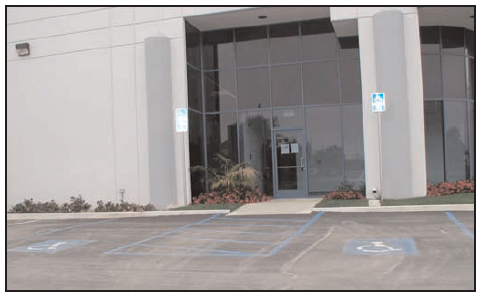

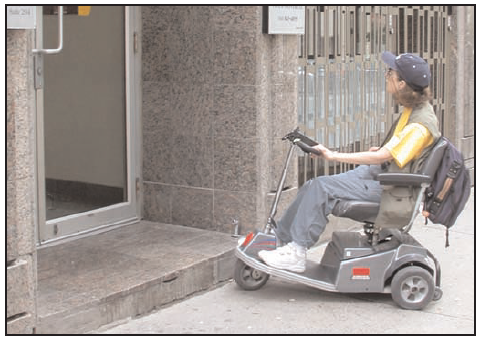
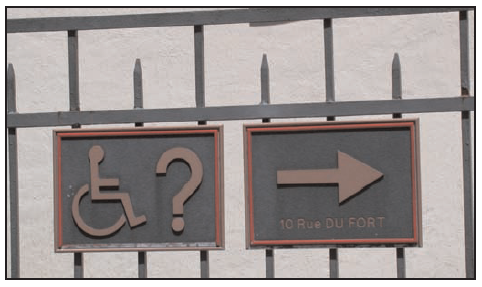
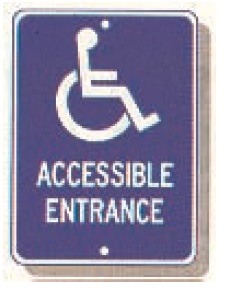
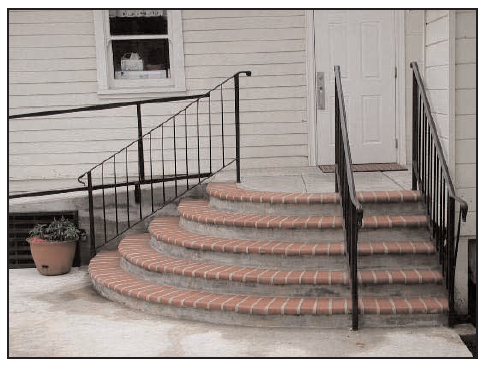
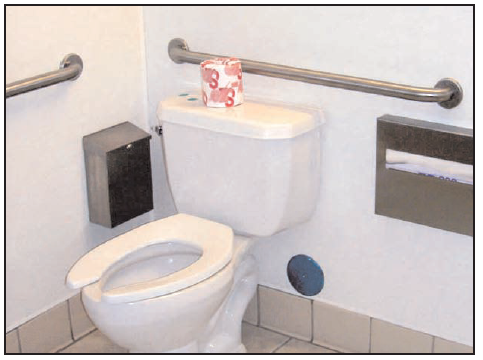
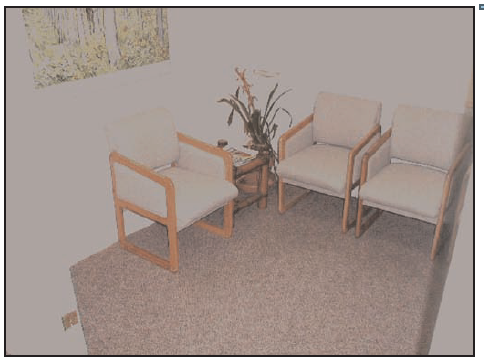
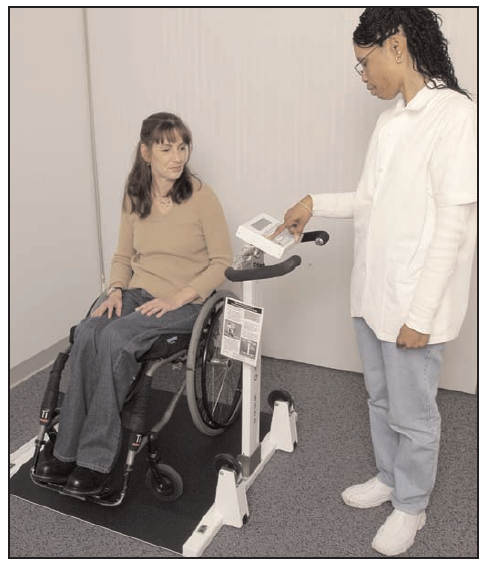
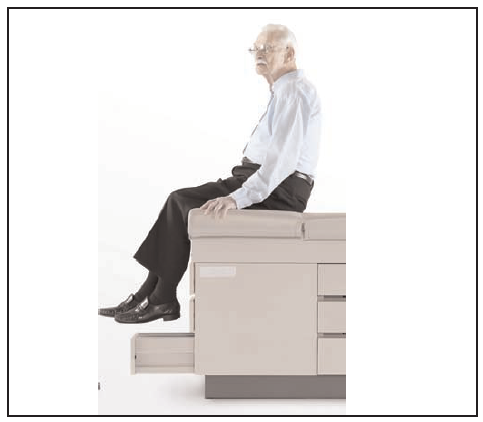
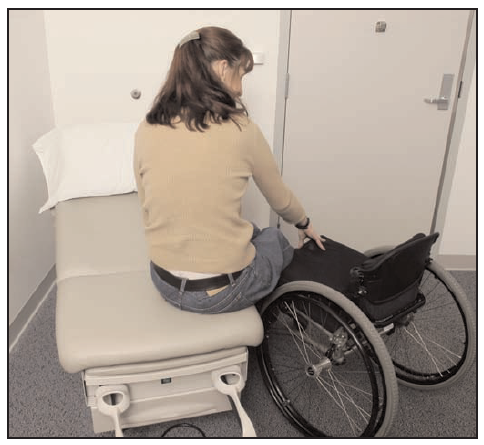
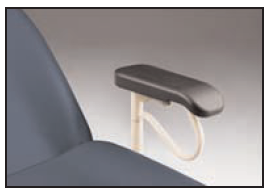
User Comments/Questions
Add Comment/Question